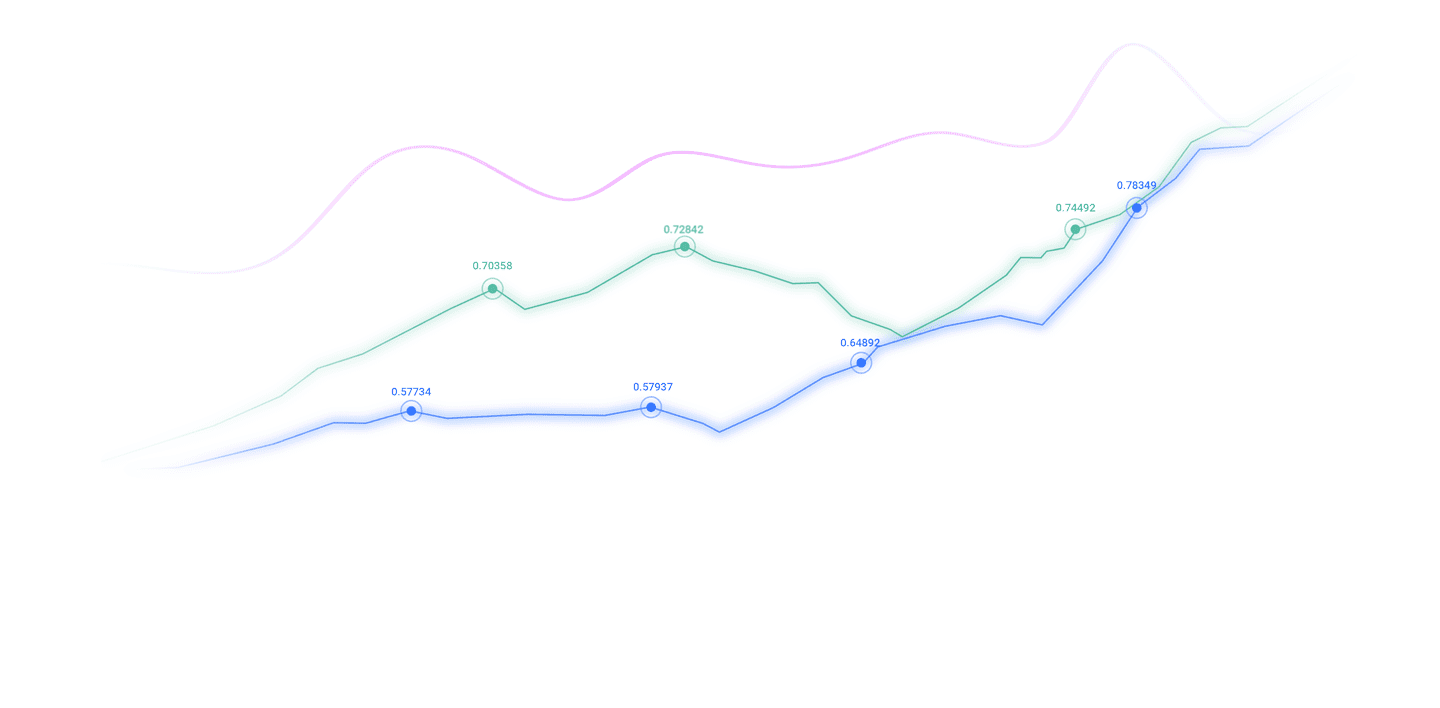Trusted by over 15 Million Traders
The Most Awarded Broker
for a Reason
CATEGORIES
News
- 8.1 Gold bulls recovered and closed for small positives, waiting for non-agricul
- Trump bombards Powell again, inflation data boosts Fed's bets cut
- US inflation cools down, analysis of short-term trends of spot gold, silver, cru
- Euro/USD enters "event vacuum trial and error period"
- The gold daily line is under pressure and pulls back, waiting for the 3300 to st
market news
A new thunderstorm occurred in regional banks in the United States. Huge amounts of money disappeared out of thin air, and the gold and equity markets were affected.
Wonderful introduction:
Green life is full of hope, beautiful fantasy, hope for the future, and the longed-for ideal is the green of life. The road we are going to take tomorrow is lush green, just like the grass in the wilderness, releasing the vitality of life.
Hello everyone, today XM Forex will bring you "[XM Forex]: New thunderstorms in regional banks in the United States, huge amounts of funds disappeared out of thin air, and the gold and equity markets were impacted." Hope this helps you! The original content is as follows:
The recent thunderstorms among regional banks and many lending institutions in the United States are very similar to the regional banking crisis in the United States in 2023.
The 2023 U.S. regional banking crisis is a period of sudden financial stress that began in March 2023. The crisis was triggered by the collapse of Silicon Valley Bank (SVB) and quickly spread to other mid-sized lenders in the United States.
On March 10, 2023, Silicon Valley Bank declared bankruptcy after suffering a devastating run on deposits. The bank had previously allocated heavy positions in long-term Treasury bonds, but as the U.S. Federal Reserve (Federal Reserve) aggressively raised interest rates, the value of these Treasury bonds shrank significantly. When Silicon Valley Bank tried to raise funds to cover such losses, depositors panicked, with withdrawals exceeding $40 billion in a single day.
The panic quickly spread to other regional institutions. Signature Bank of New York collapsed just two days later, followed by First Republic Bank in early May. Investors are worried that many smaller banks may have similar risks on their balance sheets.
This crisis followed suit and resulted in the bankruptcy of two lending institutions and widespread bad debts in banks. The crisis highlighted the vulnerability of medium-sized lending institutions in the face of sudden deposit losses. Social media further amplified panic, allowing rumors and concerns to spread far faster than a traditional bank run scenario.
Government response and market impact
U.S. regulators took quick action to curb the spread of the crisis. The Federal Deposit Insurance Corporation (FDIC) insures all deposits at Silicon Valley Bank and Signature Bank, even if the deposit amount exceeds the standard insurance limit of $250,000. This unconventional intervention was designed to prevent large-scale deposit flight.
202In March 2020, the Federal Reserve launched the Bank Term Financing Program (BTFP). This tool allows banks to pledge financing at face value of the bonds they hold without having to sell assets at a discount to stop losses. This program provides critical liquidity support to the market.
This crisis immediately triggered a global chain reaction. Not only did U.S. bank stocks fall sharply, but European and Asian bank stocks also came under pressure. Bond yields have fallen sharply as investors have turned to Treasuries and gold for safety.
Panic spread to Europe, and Credit Suisse was forced to accept an emergency takeover by UBS Group. In mid-2023, after emergency measures restored market confidence, the crisis gradually subsided, but it left a profound impact on banking supervision.
New worries surface in 2025
Recent market volatility has reignited concerns about stress in the banking industry. After Zions Bank and Western Alliance Bank disclosed losses and fraud in their www.xmh100.commercial lending businesses, their stock prices fell 13% and 11% respectively.
In September 2025, Tricolour Holdings, one of the largest subprime auto lenders in the southwestern United States, filed for bankruptcy due to soaring loan default rates and drying up of financing channels.
In the same month, FirstBrandsGroup, an auto parts distributor with a century-old history, filed for bankruptcy due to an off-balance sheet financing black hole (more than US$2 billion in funds "disappeared") and debt default.
These disclosures have awakened the market’s memory of the 2023 crisis. Investors began to question whether other regional banks also lurk similar credit risks. "There is no smoke without fire" has become a judgment frequently mentioned by market analysts.
The market responded quickly and spread widely. European and British bank stocks suffered a collective sell-off, with Barclays, Standard Chartered and Deutsche Bank all falling sharply.
The UK's FTSE 100 index fell 1.6%, its largest single-day drop in months.
www.xmh100.compared with the 2023 crisis, the scope of this concern is relatively controllable. However, the psychological shadow left by last year's crisis still amplifies the current negative market reaction.
Friday's outburst came after JPMorgan's Jamie Dimon earlier this week warned of "cockroaches" in credit markets following the collapse of Tricolor Holdings and First Brand Group, saying "if you find one cockroach, there are likely to be more."
Safe-haven assets soared due to renewed concerns
Investors turned sharply to traditional safe-haven assets. The strengthening of U.S. Treasury bond prices (that is, lower U.S. bond yields represents an increase in market risk aversion) has pushed the yields of British Treasury bonds and U.S. Treasury bonds downward simultaneously. This trend is highly consistent with the risk aversion wave in March 2023.
The price of gold exceeded US$4,370 per ounce, reaching a historical peak. Such precious metals often have safe-haven properties during times of financial stress and uncertainty, and the rise in gold prices confirms the market's real concerns about the stability of the banking system.
The foreign exchange market reacted simultaneously, with the U.S. dollar trading against high-risk currenciesThe rate strengthened. Various asset volatility indicators have risen significantly, signals that investors are adjusting to defensive positions.
The scale of safe-haven capital flows shows that the market is taking the current situation seriously. Although it has not yet reached crisis levels in 2023, the evolving trends are already causing concern.
However, U.S. bond yields rebounded rapidly afterwards, which represented a significant relief in market risk aversion, which was good for equity assets and suppressed gold prices.
Implications for central bank policies
The renewed pressure on the banking industry has a key impact on the path of monetary policy. Current market expectations are that central banks (especially the Federal Reserve and the Bank of England) may initiate easing policies earlier than previously expected.
This incident also pushed up CME interest rate futures to 98.45%. The interest rate futures market showed that traders had priced in interest rate cut expectations in advance. The logic behind this is that even if inflation remains above target, the central bank may need to prioritize maintaining financial stability.
But central bankers face a difficult balancing act: cutting interest rates too quickly could push up inflation again, while waiting too long could lead to increased financial stress. The current situation requires careful judgment and clear policy www.xmh100.communication.
Referring to previous actions taken by policymakers in the face of banking risks, recent developments in the banking industry may force them to reexamine their stance on interest rate cuts and may be inclined to use more easing measures in response.
Trading Thoughts:
In view of the 2.88% rise in gold last Thursday and the impact on global bank stocks, the subsequent development of this incident requires special attention. It www.xmh100.comes at a time when the third quarterly reports of the U.S. equity market are intensively released. Traders can focus on the financial data in the financial reports of U.S. regional banks.
At the same time, this also reflects the fragility of the U.S. real economy, which has greatly affected the U.S. equity market. First, www.xmh100.companies are unable to repay loans after capital expenditures (insufficient asset returns). Second, corporate capital expenditures may be slowed down by the tightening of bank lending, which has a particularly serious impact on technology www.xmh100.companies.
At the same time, because the U.S. central bank has a precedent of responding to crises through loose policies, gold still has the opportunity to rebound when regional bank risks are not falsified. However, the sharp increase in U.S. bond yields indicates that risks are fully released, and the withdrawal of safe-haven funds may limit gold's rebound.
The above content is all about "[XM Foreign Exchange]: New thunderstorms in regional banks in the United States, huge funds disappeared out of thin air, and the gold and equity markets were impacted". It was carefully www.xmh100.compiled and edited by the editor of XM Foreign Exchange. I hope it will be helpful to your trading! Thanks for the support!
In fact, responsibility is not helpless or boring, it is as gorgeous as a rainbow. It is this colorful responsibility that creates the wonderful life we have today. I will try my best to organize the article.
Disclaimers: XM Group only provides execution services and access permissions for online trading platforms, and allows individuals to view and/or use the website or the content provided on the website, but has no intention of making any changes or extensions, nor will it change or extend its services and access permissions. All access and usage permissions will be subject to the following terms and conditions: (i) Terms and conditions; (ii) Risk warning; And (iii) a complete disclaimer. Please note that all information provided on the website is for general informational purposes only. In addition, the content of all XM online trading platforms does not constitute, and cannot be used for any unauthorized financial market trading invitations and/or invitations. Financial market transactions pose significant risks to your investment capital.
All materials published on online trading platforms are only intended for educational/informational purposes and do not include or should be considered for financial, investment tax, or trading related consulting and advice, or transaction price records, or any financial product or non invitation related trading offers or invitations.
All content provided by XM and third-party suppliers on this website, including opinions, news, research, analysis, prices, other information, and third-party website links, remains unchanged and is provided as general market commentary rather than investment advice. All materials published on online trading platforms are only for educational/informational purposes and do not include or should be considered as applicable to financial, investment tax, or trading related advice and recommendations, or transaction price records, or any financial product or non invitation related financial offers or invitations. Please ensure that you have read and fully understood the information on XM's non independent investment research tips and risk warnings. For more details, please click here


































































































